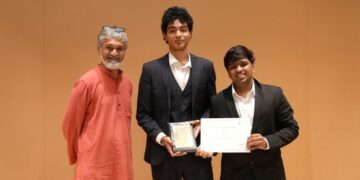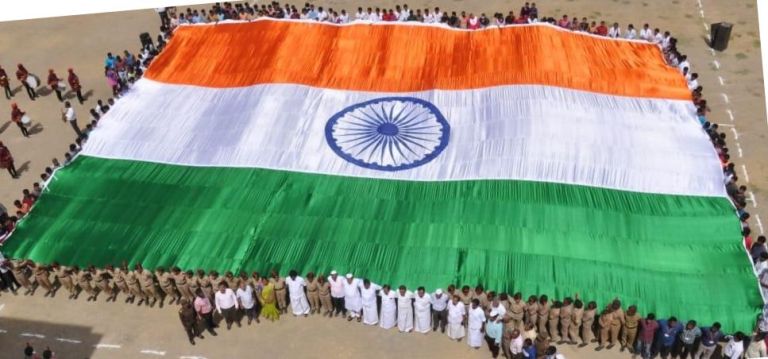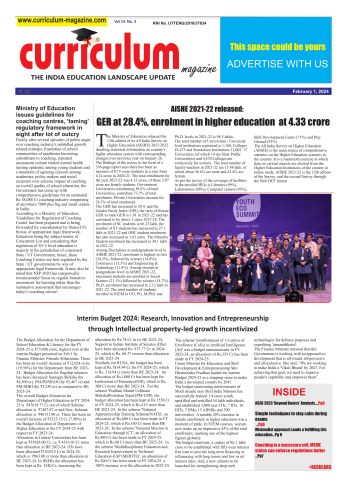The Ministry of Education on September 4 released the India Rankings 2025, prepared under the National Institutional Ranking Framework (NIRF). The rankings also mark a decade of NIRF, established in 2015. The first and maiden edition of India Rankings was released in 2016. Originally expected in June–July, the NIRF 2025 rankings were postponed due to a legal intervention. The Madras High Court imposed an interim stay following a Public Interest Litigation (PIL) filed by C. Chellamuthu, which raised concerns about the transparency and reliability of data submitted by educational institutions for ranking purposes. This had stirred uncertainty of anticipation across academia, student communities, and institutions. On May 10, 2025, a division bench of the Madras High Court dismissed the PIL, deeming it premature due to lack of comparative data and insisted that any issues be challenged post-publication with sufficient evidence.
Coming to this year’s rankings, Indian Institute of Technology (IIT) Madras retained its 1st position in the Overall category for the seventh consecutive year (2019–2025) and leading the Engineering category for the tenth consecutive year (2016–2025). Top 100 institutions in the Overall category this year include a diverse mix: 24 state public universities, 22 private deemed universities, 19 IITs and IISc, 9 private universities, 8 NITs, 7 central universities, 5 medical institutions under the Ministry of Health and Family Welfare, 4 IISERs, 1 college, and the Indian Agricultural Research Institute (IARI) under the Ministry of Agriculture and Farmers’ Welfare.
Here is the link to these rankings: https://www.nirfindia.org/Rankings/2025/OverallRanking.html
Other highlights of the rankings are as follows:
- Indian Institute of Science (IISc), Bengaluru: Ranked 1st in the Universities category for the tenth consecutive year (2016–2025) and topped the Research Institutions category for the fifth consecutive year (2021–2025).
- IIM Ahmedabad: Continued its dominance in Management, securing the 1st position for the sixth consecutive year (2020–2025). It had earlier been ranked among the top two between 2016 and 2019.
- AIIMS, New Delhi: Retained its 1st rank in Medical for the eighth consecutive year (2018–2025) and also took the 1st position in Dental for the first time, ending the three-year streak of Saveetha Institute of Medical and Technical Sciences, Chennai. AIIMS stood 8th in the Overall category, after securing 6th and 7th positions in 2023 and 2024
- Jamia Hamdard, New Delhi: Topped the Pharmacy category for the second consecutive year (2024–2025). Earlier, it had secured the top spot from 2019 to 2022.
- Hindu College, New Delhi: Emerged as the top college for the second consecutive year (2024–2025), overtaking Miranda House, which had led for seven straight years (2017–2023). Delhi colleges continued their dominance, with six of the top 10 colleges located in the national capital.
- IIT Roorkee: Retained the 1st position in Architecture and Planning for the fifth consecutive year (2021–2025).
- National Law School of India University (NLSIU), Bengaluru: Maintained the top spot in Law for the eighth consecutive year (2018–2025).
- Indian Agricultural Research Institute (IARI), New Delhi: Secured the 1st position in Agriculture and Allied Sectors for the third consecutive year (2023–2025).
- Jadavpur University, Kolkata: Retained its 1st place in the State Public Universities category, introduced in 2024.
- IGNOU, New Delhi: Continued to lead the Open Universities category for the second consecutive year (2024–2025).
- Symbiosis Skill and Professional University (SSPU), Pune: Topped the Skill Universities category for the second consecutive year (2024–2025).
Notably, two new categories gained attention this year:
- Innovation, topped by IIT Madras.
- Sustainable Development Goals (SDGs), introduced for the first time, also led by IIT Madras.
With IIT Madras, IISc Bengaluru, AIIMS, IIM Ahmedabad, and other top institutions retaining their leadership positions, the India Rankings 2025 reaffirm India’s academic excellence and institutional consistency across sectors.
India Rankings uses five broad categories of parameters (Teaching, Learning & Resources, Research and Professional Practice, Graduation Outcome, Outreach and Inclusivity, and Perception) identified in the NIRF and their weightage on scale of 10 for ranking of HEIs in different categories and subject domains. Institutions are ranked based on total sum of marks assigned for each of these five broad groups of parameters.
Besides, sourcing data on various parameters from applicant institutions, third party sources of data have also been used, wherever possible. Scopus (Elsevier Science) and Web of Science (Clarivate Analytics) were used for retrieving publications and citations data. Derwent Innovation was used for retrieving data on patents. Data retrieved from these sources was shared with the institutions for transparency with a provision to give their inputs.
A record number of 7,692 unique institutions responded and offered themselves for ranking under “Overall”, category-specific or domain-specific ranking. In all, 14,163 applications for ranking were made by these 7,692 unique applicant institutions including 4,045 in Overall Category, 1,584 in Engineering, and 4,030 in General Degree Colleges.
Speaking on the occasion Union Education Minister Dharmendra Pradhan said that the NIRF2025 rankings reflect the strength of our institutions and the promise of our students. He congratulated all the institutions featured in this year’s rankings. Union Education Minister expressed happiness in knowing that NIRF has become a national benchmark. Sukanta Majumdar, Minister of State for Education and DoNER, Dr. Vineet Joshi, Secretary (HE); Prof. T.G. Sitharam, Chairman, AICTE; Prof. Anil Sahasrabudhe, Chairman, NETF, NAAC and NBA and Dr. Anil Kumar Nassa, Member Secretary, NBA were present on this occasion along with vice chancellors and directors of institutions of higher education.
The Minister further said he was confident that NIRF would evolve as one of the best accreditation frameworks, involve more data-driven approaches, include more ranking parameters and categories and on board more institutions going forward.
Pradhan underlined that we are uniquely poised to make a quantum leap and that the Prime Minister Shri Narendra Modi had given the clarion call for a Viksit and Atmanirbhar Bharat by 2047. He said that we got ‘Swaraj’ and now we have to fight for our ‘Samriddhi’.
He mentioned that our academic institutions are at the core of this and they have to play a leading role in creating a roadmap for ‘Samriddhi’ and ‘Atmanirbharta.’
MoS Dr. Sukanta Majumdar, said that India’s higher education system has expanded access and inclusivity at an unprecedented scale. With more than 14,000 institutions participating this year, NIRF has become a credible framework that not only ranks institutions but also drives quality, integrity, and innovation. As we mark a decade of India Rankings, this journey reflects the resilience and aspirations of our universities and colleges.
In line with the past practices, 100 institutions each are ranked in the Overall, Universities, Colleges, Engineering, Pharmacy and Management categories. Additional rankings are published in structured rank bands as mentioned below:
- Overall and Universities: Two rank bands (101 – 150 and 151 – 200)
- Engineering and College: Three rank bands (101–150, 151–200, 201–300)
- Management and Pharmacy: One rank band (101–125)
- State Public Universities: Top 50 institutions ranked + one rank band (51–100)
- Innovation and SDGs: Top 10 institutions ranked + one rank band (11–50)
In subject domains such as Architecture & Planning, Law, Medical, Dental, Agriculture & Allied Sectors, and Research Institutions, between 40 to 50 institutions are ranked. For emerging and specialized categories namely, Open Universities and Skill Universities, three institutions each are ranked due to the relatively smaller pool of eligible participants.












